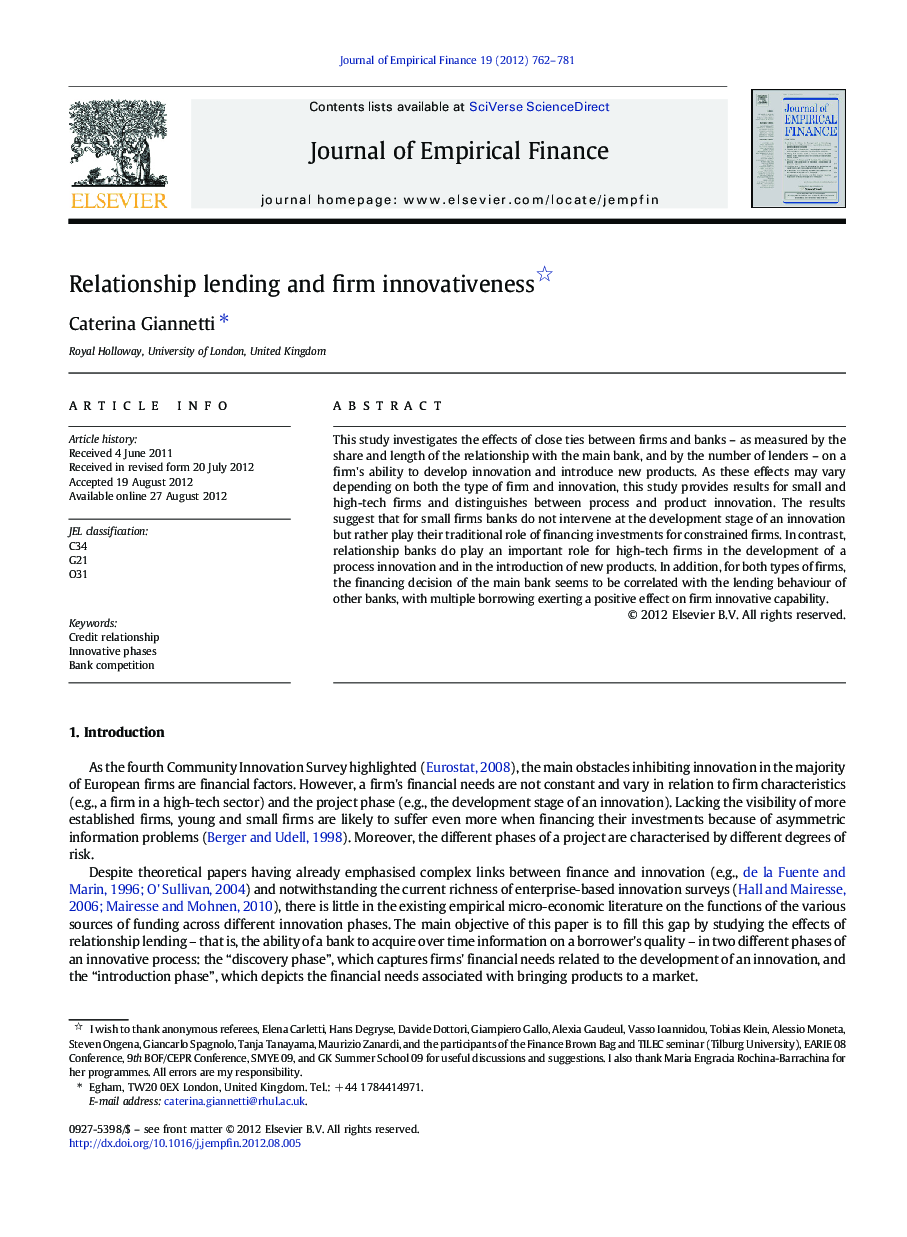| Article ID | Journal | Published Year | Pages | File Type |
|---|---|---|---|---|
| 958476 | Journal of Empirical Finance | 2012 | 20 Pages |
This study investigates the effects of close ties between firms and banks – as measured by the share and length of the relationship with the main bank, and by the number of lenders – on a firm's ability to develop innovation and introduce new products. As these effects may vary depending on both the type of firm and innovation, this study provides results for small and high-tech firms and distinguishes between process and product innovation. The results suggest that for small firms banks do not intervene at the development stage of an innovation but rather play their traditional role of financing investments for constrained firms. In contrast, relationship banks do play an important role for high-tech firms in the development of a process innovation and in the introduction of new products. In addition, for both types of firms, the financing decision of the main bank seems to be correlated with the lending behaviour of other banks, with multiple borrowing exerting a positive effect on firm innovative capability.
► The effect of the entire set of relationship lending variables is studied. ► Insights on the effects of firm debt-structure on firm innovativeness are provided. ► The methodology deals with firm unobservable characteristics in two innovative phases. ► For high‐tech firms the presence of multiple lenders with a pivotal bank is beneficial.
